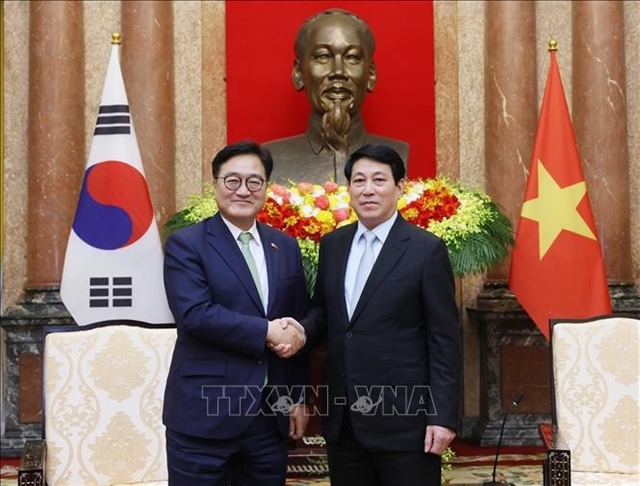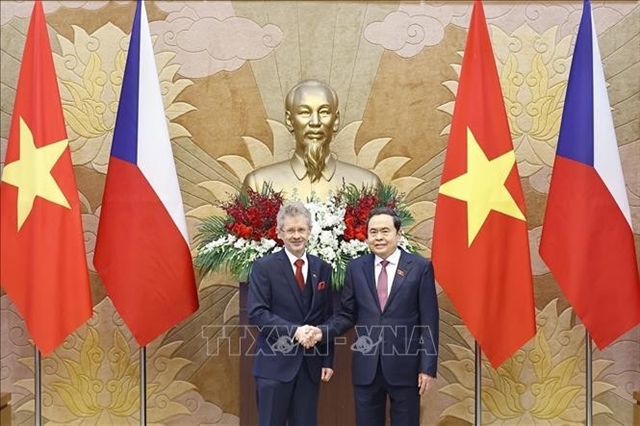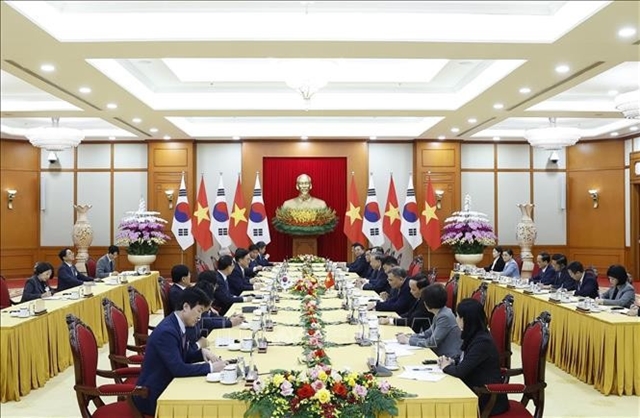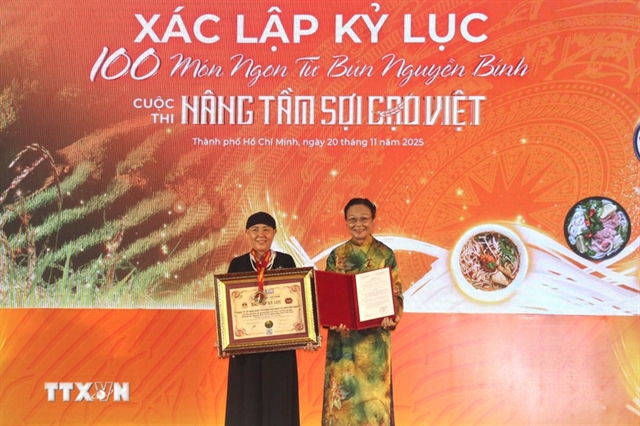 Life & Style
Life & Style
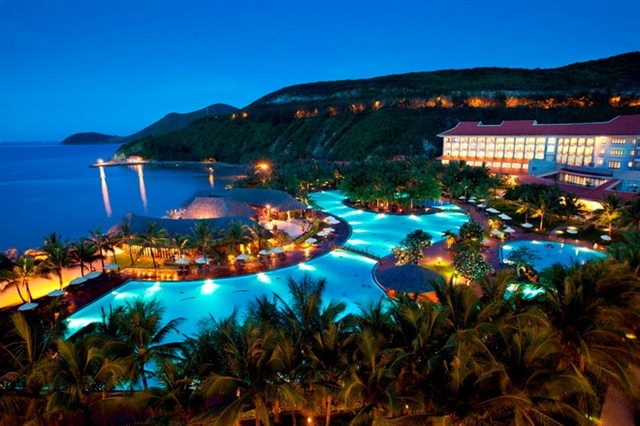
Local authorities in the northern province of Bắc Giang have started initial steps to restore ancient relics on the West Yên Tử mountain range, where King-Monk Trần Nhân Tông (1258-1308) studied and practiced Buddhism.
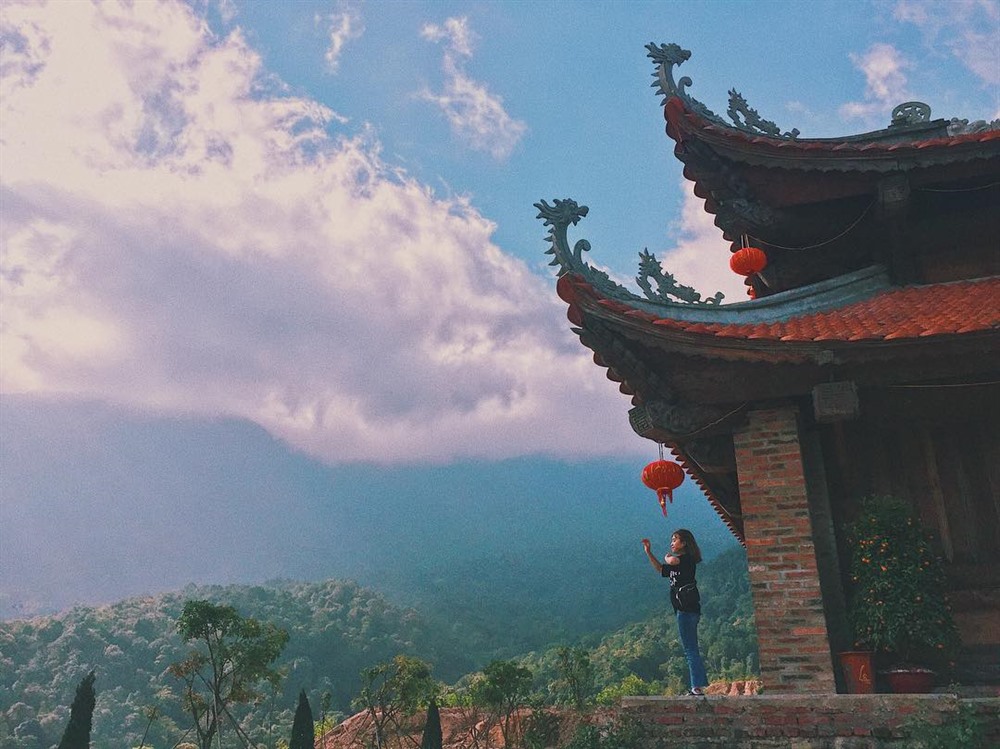 |
| Vast landscape: West Yên Tử mountain range hosts various relic sites involving King-Monk Trần Nhân Tông (1258-1308) as he studied and practiced Trúc Lâm Yên Tử Zen Buddhism here between 1293 and 1308. Photo vngo.vn |
BẮC GIANG — Local authorities in the northern province of Bắc Giang have started initial steps to restore ancient relics on the West Yên Tử mountain range, where King-Monk Trần Nhân Tông (1258-1308) studied and practiced Buddhism.
According to Lê Ánh Dương, deputy chairman of Bắc Giang People’s Committee, through many years of research, the concerned agencies have proved there is a connection between Vĩnh Nghiêm Pagoda in Yên Dũng District, which was built in the 11th century, and a series of ruined pagodas, temples and towers in the west of Yên Tử range.
“That’s where Monk King Trần Nhân Tông starting studying Buddhism in 1293 after handing his throne to his son, prince Trần Thuyên, created the Yên Tử Zen Buddhism school at Vĩnh Nghiêm Pagoda,” Dương said. “He travelled up the West Yên Tử range, practised Zen Buddhism, popularising it among followers before passing away at Ngọa Vân pagoda on Bảo Đài Mountain in the East Yên Tử range.”
After more than 700 years of development, the Trúc Lâm Yên Tử Zen school has promoted the principle of embracing life and of leading a religious life while fulfilling a citizen’s responsibility for national construction and development.
 |
| Spiritual place: Hạ Pagoda at the West Yên Tử Culture Spiritual Tourism Site in Bắc Giang Province. Photo cand.com.vn |
“The province wants to restore the relics as a way to rebuild the King’s Buddhism practise and add more tourism spots for today’s Buddhists and travellers,” Trần Mạnh Hà, director of Bắc Giang Culture, Sports and Tourism Department told Việt Nam News.
Venerable Monk Thích Trúc Thái Minh, head of Ba Vàng Pagoda in the northern province of Quảng Ninh has proposed authorities let his team conduct examinations at the site to implement the project.
Ten relics located in two districts of Lục Ngạn and Lục Nam of Bắc Giang Province will be the key spots for the restoration project.
“The project aims to open in each ruined pagoda on the way up on West Yên Tử range a traditional Trúc Lâm Yên Tử School and restore localities’ festivals,” said Venerable Monk Minh.
The pagodas to be renovated including Mã Yên, Hòn Tháp, Bình Long will link with the West Yên Tử Culture Spiritual Tourism Site in the same province, which was constructed in 2014 and is expected to be completed by 2025; and the Yên Tử Landscape Complex in the east side of Yên Tử range into a large-scale religious complex, restoring Trúc Lâm Buddism School holy land, according to Hà.
The authorities of Bắc Giang will support investors in legal procedures, moving locals out of the allocated areas and building roads to the relics, Dương confirmed.
In a few months time, authorities in two districts of Lục Ngạn and Lục Nam will ask for locals’ opinions on implementing the projects, he said.
 |
| Great view: Cable cars at the West Yên Tử Culture Spiritual Tourism Site in Bắc Giang Province. The area hosts a spectacular natural landscape. Photo cand.com.vn |
Hà said the authorities will mobilise private capital for the project. Hence he was not sure when the project will be completed.
“Maybe in ten to twenty years time,” he added.
According to Bắc Giang’s Culture, Sports and Tourism Department, Monk King Trần Nhân Tông started his study of Buddhism from the west of Yên Tử range (of today’s Bắc Giang Province). His followers Pháp Loa and Huyền Quang followed his steps on the west of Yên Tử range to practice the Trúc Lâm Zen Sect.
Early monks of the sect built pagodas, towers and spread Buddhism throughout Bắc Giang Province, where today remain 2,000 historical and cultural sites with various holy pagodas and temples like Am Vãi, Bình Long, Yên Mã, Sơn Tháp and Đám Trì.
Vĩnh Nghiêm Pagoda has been recognised as a Special National Relic Site, which hosts a stock of thousands of wood printing blocks teaching Buddhism that has been listed as a World Documentary Heritage by UNESCO.
 |
| In the wild: An aerial view of a building at the West Yên Tử Culture Spritual Tourism Site in Bắc Giang, which will be fully completed by 2025. The site has been open to public since the beginning of 2019. Photo baobacgiang.com |
“With such a large number of relics, the West of Yên Tử range has been considered as the birthplace of Buddhism between the 11th and 14th century, which hosted the first Buddhist Sangha of Việt Nam,” said Venerable Monk Minh.
In 2015, three provinces of Quảng Ninh, Bắc Giang and Hải Dương locating under Yên Tử mountain range submitted to the government a list of destinations of Trần dynasty’s relic sites and Trúc Lâm Yên Tử Buddhism Zen Sect to seek the government’s recognition.
The complex includes Yên Tử Historical Relics and Landscape (in Uông Bí City, Quảng Ninh Province); Trần Dynasty’s Relics Sites in Đông Triều Commune, Quảng Ninh Province; Thanh Mai - Côn Sơn - Kiếp Bạc Historical and Cultural Site in Chí Linh Town, Hải Dương Province; West Yên Tử Relic Sites in Bắc Giang Province.
Historical documents mentioned the Yên Tử mountain range formed “Đông Triều Bow”, which is divided into two parts: the east side belongs to today’s Quảng Ninh and Hải Dương provinces while the east side is located in today’s Bắc Giang Province. — VNS

